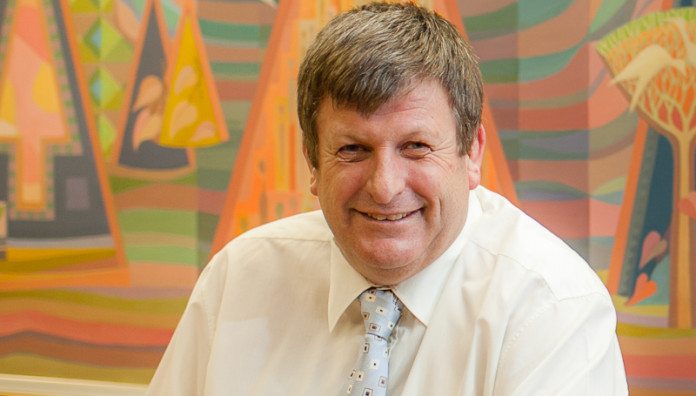
HARMONY Gold had its R3.8bn investments in the reopening of Hidden Valley in Papua New Guinea (PNG) and the purchase of Moab Khotsong from AngloGold Ashanti to thank for a much improved operating and financial performance in the 2019 financial year.
Headline share earnings were 19% higher year-on-year at 204 South African cents on the back of 1.44 million ounces in gold production, 17% higher. This is close to the production CEO Peter Steenkamp said he would achieve on taking the job three years ago. Production of 1.46 million oz has been targeted for the current financial year.
The two mines contributed towards a 49% improvement in Harmony’s production and generated R1.35bn of Harmony’s R1.73bn in operating free cash flow.
Including certain non-cash items, including previously flagged write-downs totalling R3.9bn on mines such as Tshepong, which partly takes account of the newly imposed Carbon Tax, a basic headline loss of -498c/share was booked (2018: -1003c/share).
But it was the prospect of a far improved showing in the current financial year following a major kick-up in the rand gold price – Harmony’s famous gold price leverage – that the firm wanted to highlight with today’s results.
Assuming a price received of R750,000/kg, just slightly more than the current price of R742, 689/kg, Harmony Gold would extract from its mines a 30% all-in sustaining cost (AISC) margin, enough to leave the group cash positive by the 2020 financial year. This makes the significant assumption that the current gold and rand value scenario is perpetuated for the next 12 months.
“Of course if gold continues at these levels, our results will be significantly better than the year before,” said Frank Abbott, Harmony Gold CFO. “This financial year, prices were not that high, but there have been increases in last few months,” he said.
The leverage has been a major factor in driving Harmony’s share price which is 103% stronger on the Johannesburg Stock Exchange since May. Steenkamp said the macroeconomic environment was supportive of continued gold price strength as was the fact new orebodies were not being discovered.
Steenkamp, however, kept to the tightest of scripts regarding further acquisitions notwithstanding the success of having bought Moab Khotsong in particular. AngloGold’s Mponeng, as well as its Mine Waste Solutions, are both up for sale, but Steenkamp declined to comment on the bidding process, saying only the firm had an interest.
He acknowledged, however, that changes in the South African permitting regime as per the latest iteration of the Mining Charter would make more merger and acquisition activity “more difficult”. It had not made transactions “impossible” but it would have “a big impact” on the firm’s decision-making process, he said.
In addition to M&A, the company was running the rule over organic growth. It dusted off the expansion of its Target mine, last looked at more than ten years ago. Higher up the project chain, however, was the imminent R400m shaft pillar mining at Great Noligwa.
WAFI-GOLPU
Steenkamp played a straight bat to continued delays in the permitting process of the firm’s Wafi-Golpu project in PNG. The project development has been delayed following the surprise replacement of PNG’s prime minister with the incumbent – James Marape – wanting to extract more from foreign investors.
“We don’t believe [PNG’s position is] much different than before,” said Steenkamp. “I don’t think the government will have different take on it. It is happy to have us as operators. At the moment the biggest focus is to resolve the issue of the LNG project with Total which is why we are not getting much traction on our project at the moment,” he said.
The Marape administration does plan, however, to take a larger share of the Porgera gold mine as part of lease-renewal talks, diluting the ownership of joint venture partners Barrick Gold and Zijin Mining Group.
In terms of Wafi-Golpu, the project is owned 50/50 with Australian miner, Newcrest Mining, but the government does have the option to take an investment of up to 30% in the project, scoped to produce 266,000 oz at a capital cost of $2.82bn based on a 2018 feasibility study.
SAFETY
There were 11 fatalities recorded at Harmony mines on a rolling 12-month basis, but six fatalities in the last quarter of the year under review.
Steenkamp was forthright on the issue: “We lost it in the fourth quarter” he said of underground deaths of employees, especially at Doornkop which at four million fatality-free shifts previously held the best safety record.
“They were all over the show and behaviour related issues,” he said in a media conference call when asked about the deterioration in the group’s safety record. “Some fatalities were a disregard of protocol rules,” he said. “We dad a bad spell. There was no pattern,” he said.








